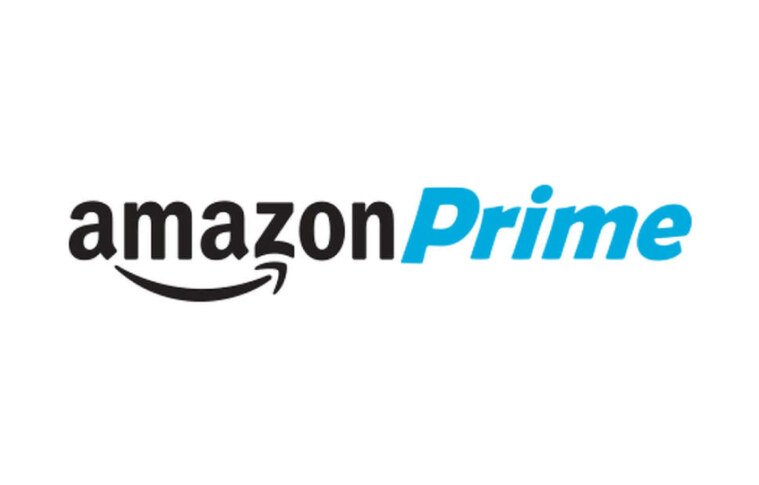Introduction: Amazon Prime, launched in 2005, began as a subscription service primarily offering free two-day shipping for Amazon customers. Over the years, it has evolved into a multifaceted membership program that not only enhances the shopping experience but also offers a range of additional services, including streaming, exclusive deals, and more. By leveraging data and continuously responding to customer preferences, Amazon has successfully expanded Prime’s offerings into a holistic ecosystem, transforming it from a shipping service into an all-encompassing membership that touches various aspects of consumers’ lives.
This case study delves into how Amazon has adapted its Prime offering over time, using customer preferences and feedback to expand its value proposition. It explores the business strategies Amazon employed, the challenges faced, and the results achieved as it continually innovates its offerings to cater to evolving customer demands.
1. The Origins and Initial Success of Amazon Prime
Amazon Prime was initially launched to improve customer loyalty and retention. The core offering was free two-day shipping on eligible items, which was a groundbreaking move at the time. By reducing shipping costs for frequent Amazon customers, Prime incentivized people to purchase more, knowing that they would save on delivery fees.
a. Initial Business Objective:
The primary business objective of Amazon Prime at its inception was to increase customer retention and drive repeat purchases. By offering a subscription model, Amazon effectively created a recurring revenue stream while encouraging more frequent transactions from members.
- Prime’s Early Value Proposition:
- Free two-day shipping
- Priority access to lightning deals and promotions
- The ability to stream a limited catalog of videos, an early move into the growing online video market.
At the time, Amazon was primarily seen as a retailer for books and electronics, so the expansion into shipping services was a natural fit. However, Amazon soon realized that there was significant potential to expand the membership’s value beyond just shipping.
2. Expanding Amazon Prime: A Data-Driven Approach
Amazon’s ability to adapt and expand its Prime offerings is driven by its customer-centric business model. By collecting vast amounts of data on consumer behavior, purchase history, and preferences, Amazon continuously refines its Prime offering to meet the specific demands of its members.
a. Amazon Video and Prime Video
In 2011, Amazon launched Prime Instant Video, later rebranded as Prime Video, to compete with Netflix and other streaming platforms. Amazon’s decision to enter the video streaming industry was based on a deep understanding of how consumers were shifting their entertainment consumption from traditional TV to digital streaming platforms. By offering access to thousands of movies and TV shows as part of the Prime membership, Amazon was able to attract a broader audience and increase the perceived value of Prime.
- Original Content Strategy: In 2013, Amazon further expanded its streaming offering by introducing original content like “House of Cards” and “Transparent.” This move positioned Amazon Prime Video as a serious competitor to Netflix and Hulu, signaling Amazon’s commitment to being a leader in entertainment content.
- Global Expansion of Video Content: Amazon’s investment in content creation has extended internationally, catering to diverse tastes and languages, thus increasing the service’s global appeal.
b. Prime Music and Prime Video Channels
As streaming music services like Spotify gained popularity, Amazon expanded Prime to include Prime Music in 2014, allowing members to access over two million songs for free. In 2016, it introduced Amazon Music Unlimited, a premium service offering a larger catalog of songs for an additional fee. The goal was to offer a comprehensive media ecosystem — music, movies, TV shows, and more — to attract and retain customers who valued digital entertainment.
- Complementing the Shopping Experience: Amazon’s strategy of integrating music and video services into the Prime membership also created opportunities for cross-selling. Members could use the platform to purchase music albums, movie tickets, or other related goods.
c. Amazon Fresh and Whole Foods Integration
Understanding the growing demand for online grocery shopping, Amazon introduced Amazon Fresh in 2007 and expanded it in 2017 with its acquisition of Whole Foods. By integrating grocery shopping into Amazon Prime, the company created a multi-dimensional experience for Prime members, extending their membership’s value into new areas of life.
- Prime Day and Exclusive Offers: Amazon leveraged its vast user data to create Prime Day, a sales event specifically for Prime members. Prime Day became one of the largest shopping events in the world, driving massive sales volume for Amazon. The event also allowed Amazon to gather more data on customer preferences and further refine its product offerings.
- Prime Early Access to Deals: As of 2020, Prime members also gained early access to Lightning Deals, Black Friday discounts, and other sales events, increasing the value of the membership and further embedding Amazon into the daily lives of its consumers.
3. The Expansion of Prime’s Ecosystem: Cross-Platform Integration
As Amazon Prime evolved, it became evident that the company sought to create an interconnected ecosystem. The expansion wasn’t just about adding more services; it was about building a tightly integrated ecosystem that offered both convenience and enhanced utility for customers.
a. Amazon Echo and Alexa Integration
One of the most strategic moves Amazon made in expanding Prime’s value proposition was its integration with Amazon Echo and Alexa, Amazon’s voice-controlled digital assistant. By embedding Alexa into Prime’s ecosystem, Amazon enabled voice commands for a range of Prime services, including music streaming, shopping, and home automation.
- Voice Shopping: Alexa’s integration with Prime made it easier for users to shop using voice commands, thus increasing impulse purchases and driving further use of Amazon’s platform.
- Smart Home Ecosystem: Through Alexa, Amazon created a seamless experience between entertainment, home control, and shopping, encouraging more customers to invest in Echo devices and further embedding Prime into their daily routines.
b. Amazon Prime Reading and Kindle Unlimited
Amazon further expanded Prime’s utility by offering Prime Reading, a service that gives members access to a rotating selection of books, magazines, comics, and more. For an additional fee, customers could access Kindle Unlimited, a subscription service that offers access to a vast library of eBooks.
- Cross-Selling Opportunities: Amazon successfully integrated the reading ecosystem into the Prime membership, encouraging users to buy Kindle devices and eBooks while driving further engagement with Amazon’s media platforms.
4. Challenges of Expanding Amazon Prime’s Offerings
While Amazon Prime has been incredibly successful, it has also faced challenges in its expansion.
a. Market Saturation and Retention
As Amazon Prime expanded its offerings, it faced the challenge of market saturation, particularly in the United States, where many households were already Prime members. To maintain growth, Amazon needed to ensure that the new services within Prime (e.g., video streaming, grocery delivery) provided sufficient value to retain members, especially as competitors like Netflix, Spotify, and Walmart offered similar services.
b. Profitability and Cost of Expansion
One of the major concerns for Amazon has been the cost of running Prime, particularly the free shipping benefits, which have been expensive to maintain. As Prime expanded into new services (music, video, groceries), Amazon had to balance the cost of providing these services with the price of the membership. The company has experimented with increasing the membership cost while ensuring that the added benefits would justify the price hike.
5. The Results: A Stronger Ecosystem and Increased Customer Loyalty
The expansion of Amazon Prime’s product offerings has had several key outcomes:
a. Increased Membership and Revenue Growth
As of 2023, Amazon Prime boasts over 200 million members worldwide, with significant growth from international markets. The multi-service offering has driven both new subscriptions and higher retention rates, as customers see value in the range of services offered.
- Prime Day and other exclusive offers have consistently generated billions of dollars in sales, further reinforcing Amazon’s dominance in retail.
b. Brand Loyalty and Customer Lifetime Value
Prime’s success has also been attributed to its ability to foster strong brand loyalty. The more services a member uses, the more likely they are to remain subscribed. By integrating Amazon Prime into so many aspects of consumers’ lives (shopping, entertainment, home control), Amazon has created an ecosystem that is difficult for competitors to replicate.
c. Data-Driven Decision Making
Amazon’s ability to gather and analyze data has been instrumental in Prime’s expansion. By closely monitoring consumer preferences, Amazon can continually refine its offerings, introduce new services, and tailor its marketing strategies to ensure that Prime members receive the most relevant value.
6. Conclusion: The Strategic Power of Evolving Based on Customer Preferences
Amazon Prime’s evolution exemplifies how businesses can leverage customer data to expand their product offerings, build a more loyal customer base, and dominate multiple industries. By continuously analyzing customer behavior and preferences, Amazon has been able to turn Prime from a shipping service into a comprehensive ecosystem, creating new revenue streams and maintaining its competitive edge.
Key Takeaways:
- Customer-Centric Innovation: Amazon’s focus on customer needs and preferences has allowed it to continually innovate and expand the value of Prime.
- Data-Driven Decisions: Amazon uses extensive data analytics to guide the development of new services, ensuring that each expansion is aligned with customer demands.
Brand Loyalty: By creating an interconnected ecosystem, Amazon has fostered a high level of customer loyalty, encouraging users to subscribe to more services within the Prime platform.



